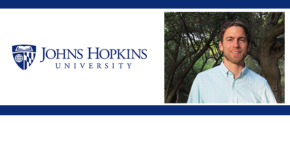 We need to purify water, but can we do it better?
We need to purify water, but can we do it better?
Carsten Prasse, assistant professor of environmental health & engineering at Johns Hopkins University, explains some unwanted chemicals may be a byproduct of purification.
Carsten Prasse’s research is driven by a fascination with water chemistry and a deep concern about the public and environmental health impacts of chemicals present in our water. He investigates the fate of contaminants in the built and natural environment using state-of-the-art analytical chemistry techniques (e.g. high-resolution mass spectrometry) with the focus on identifying transformation products and understanding underlying mechanisms of transformation in the urban water cycle. Prioritizing which compounds are most threatening to human and environmental health is a great challenge given that thousands of chemicals are present in our waters. To tackle this problem, Carsten’s research has recently focused on using concepts and methods from toxicology and public health. This work is interdisciplinary with the goal of developing new methodologies to inform water treatment technology development, comprehensively assess water quality and characterize the drinking water exposome.
Water Purification
From lead in Flint, Michigan to GenX spills in North Carolina, drinking water safety is in the spotlight, and for good reason. Both lead and GenX, an unregulated chemical compound, are associated with a variety of adverse health outcomes.
But there’s an important story here that isn’t being told, and it’s this: New chemicals are being discovered that are, ironically, created when water is treated to purify it.
Though there have been plenty of studies on the byproducts of water treatment processes like chlorination, little is known about what is formed with newer approaches, like oxidation with hydrogen peroxide and UV light.
My colleagues and I studied what happened to phenols during chemical oxidation to simulate what goes on in modern water treatment plants. Phenols are a class of organic chemicals found in dyes and pharmaceuticals, and are abundant in the environment.
We found that phenols convert into a compound known to have negative effects on human cells, including DNA damage. More testing using proteins extracted from mice livers revealed an impact on a variety of different proteins, including some involved in energy metabolism.
We care about modifications of energy metabolism because of its relevance to diseases such as obesity and diabetes.
Water purification is extremely challenging, as contaminants come from so many sources—plants, farms, wastewater—and it’s not always clear what’s being generated in the process.
By 2050, two-thirds of people around the globe will live in areas relying on drinking water that contains farm runoff and wastewater from cities and factories. So safe and effective purification methods will be even more critical.
Our next step is to investigate how this method can be applied to more complex samples, and to study other contaminants that are likely to result in the formation of similar byproducts.
We want, and need, our drinking water to be safe.

Comments
One response to “Carsten Prasse, Johns Hopkins University – Water Purification”
Informative read! Yes it is crucial that our drinking water to be safe for everyone.
zeal drink